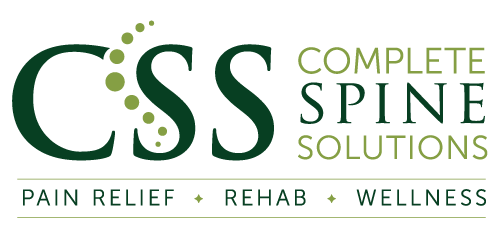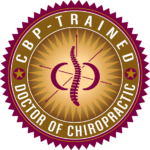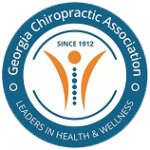Posture: A Chiropractic Perspective Interview with Dr. Mike & Dr. Shapiro
This is an interview that took place between Chiropractic BioPhysics Certified Drs. David Shapiro & Mike Wiener of Complete Spine Solutions. Office in Tucker, Georgia.
A conversation about posture and its connection to overall health.
Misconception About Posture
Dr. Shapiro: Dr. Mike, can you comment on what you are hearing about posture these days?
Dr. Mike: I think people are starting to notice posture more. Posture is in the news a lot because it appears to be getting worse across the population. This is due to environmental hazards such as excessive computer work, texting, and gaming.
People think they can fix their posture by standing erect and pushing their shoulders back. This is a misconception. That does not actually change posture. Your body will revert back to its original position as soon as the person stops thinking about it.
The process to correct someone’s spinal structure, permanently, requires a specific, proven, targeted protocol. This is exactly what we do at Complete Spine Solutions (CSS).
Dr. Shapiro: I’m hyper-aware of posture because this is what we focus on at CSS, day in and day out and now there seems to be a new story in the news every other week. A recurring one is “text neck,” which is a very common problem today. This occurs when people look down at their phones, computers, and laptops all day, and their heads and shoulders lean forward. We often see people altering their workstations and changing the mattresses they sleep on. Many people are tying everything back to posture.
What does “Proper Posture” mean?
Dr. Mike: If we know what normal posture is, then it’s much easier to identify improper or poor posture. When our bodies are in a normal position, our bodies can work efficiently. In an optimal postural position, the spinal cord and nerves have very little tension on them.
When someone’s posture is not in a straight line from the ears down to the ankles (from the side), and when the head is not directly over the feet (from the front), the spinal cord has to stretch into a weakened, distorted position. This leads to a decrease in the function of the spinal cord and nerves, which control every function of the body. If someone has improper posture, his or her body will not function optimally. Bodily symptoms will begin to appear.
How Gravity Affects Posture
Dr. Shapiro: So why do some people’s brains think it is normal to be bent over and they aren’t aware that they even have a postural distortion?
Dr. Mike: If we are stuck in that position all day, then gravity is going to take over, which is a force that is impossible to overcome. Just trying to stand up straight a few times a day will not cut it. Our body will continue to shift out of position as gravity pulls down, every minute of every day.
Over time, our structure begins to mold into an improper position. When that happens, our spinal joints and brain, which control our posture in our body, will continue to keep our bodies in this altered position. From that point on, the brain thinks that it is “normal” to stand that way. That is why much more is needed than just pulling back your shoulders to correct your posture.
Posture Does Not Just Affect the Spine
Dr. Shapiro: Interesting. So posture is an outward representation of what our spine looks like on the inside; people don’t really think of it that way though. Most people think of it as “I have bad posture” or, “everyone told me I don’t stand up straight.” The spine is a major contributor to what makes up our posture. As spine doctors, we know it is a lot more complicated. Posture doesn’t just affect the spine, it also affects many other parts of the body such as hips, knees, shoulders, soft tissue like IT bands, etc. Not only that, a person’s genetics can affect his/her spinal structure and therefore posture.
.
The structure on the inside of the body makes up what our posture really looks like on the outside. When people talk about fixing their posture, they think about sitting up straight and that’s it. Other people take a yoga class to improve their posture, which is good, and important to do. But do those things really change the mechanics of your spine? In other words, can that really alter your posture long term? I’ll be honest with you. I have done a lot of research, and I have not seen any study that demonstrates that thinking about sitting up straight alters the mechanics of the spine and permanently changes posture. Posture is really a subconscious thing.
Can You Really Change Your Posture?

Dr. Shapiro: How do you permanently improve your posture and your structure?
Dr. Mike: Posture change can only really happen subconsciously. There are only 2 methods that are proven to change posture: Surgery and Chiropractic BioPhysics spinal corrective care.
This is what we do here at Complete Spine Solutions. Our non-surgical approach is not only logical, but it’s also based on the scientific literature. We don’t just exercise weak muscles and stretch contracted muscles. Instead, we tailor a custom exercise protocol to properly support each individual spine. If you have a mechanical structural issue, then we will devise a protocol, that will hold you in the opposite position of your abnormal posture.
Why is Going to the Gym Not Enough to Strengthen Weaker Muscles in Order to Correct Posture?
Dr. Shapiro: So it seems like you are saying that working certain muscles that are weak can alter the mechanics of your spinal structure, which really alters your posture. If that’s so, then can’t you just go to the gym and work on those weaker muscles?
Dr. Mike: No. The approach, going to the gym and working out, is more focused on individual muscle groups, not strengthening smaller, postural muscles. Our protocol prescribes exercises opposite of an individual’s posture, instead of only focusing on individual, bigger muscles.
Dr. Shapiro: So you’re talking about working specific targeted muscles to make your posture more normal. It’s also not just about exercise. There are two other parts that are missing: ligaments and neurology. Could you explain how they factor into posture?
Why is Neurology a Vital Part of Changing Your Posture
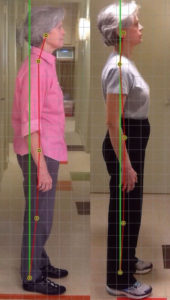
Dr. Mike: What holds us in our posture is our spine and nervous system – especially our subconscious nervous system in the cerebellum. It’s not just the muscles. We need to do certain spinal manipulative adjustments opposite to your posture. These adjustments influence the nervous system by changing where your brain thinks you should stand and position yourself in space. This changes your posture into a new and healthier position.
Dr. Shapiro: For people who are not as familiar with this, let’s explain the adjustment. We would apply a gentle, painless, mechanical force to the spine in the opposite way from which it has been. For example, if my head leans to the right, then we are going to apply a general mechanical force in the opposite direction, towards the left. You can’t get much more logical than that. If something is bent, you need an equal and opposite force in the other direction to unbend it. This allows someone who is bent over to move into a more vertical state.
We gently push the spine in this direction over time. It could be done with a dramatic force, but it would be extremely painful and no one would ever want to receive that treatment. Instead of doing that, we use a much more gentle force repeatedly over and over again. So what’s the third component to changing spinal mechanics and someone’s posture?
The Most Important Part of Changing Your Posture
Dr. Mike: Possibly the most important part involved are the ligaments because that is what holds us in the proper position. The ligaments are unbelievably strong, which is something we take for granted. Due to the properties of ligaments, if we stretch ligaments towards a more normal position over a period of time, then the ligaments are able to change in length. We would hold someone in that opposite position for 10 to 20 minutes because that’s how long it takes for your ligaments to stretch to allow for a better postural position.
Dr. Shapiro: By the way, if you don’t get to the 10-minute threshold right away, it’s okay. Nobody ever starts out at 10 minutes. I’ve never heard of any other healthcare providers doing a 10-minute stretch. I’m sure it exists, but I never heard of anyone doing a constant stretch or traction for 10 minutes or longer. That is what we do with all of our patients at CSS. We want to build them up to at least 10 minutes because any stretch less than 10 minutes will cause the ligaments to spring back to their original length. This is proven in the literature. Not only is it an evidence-based approach proven through research, but we’ve seen it time and time again with our patients (for 25 years). When we hit 10 minutes, that’s when they start to hold that corrected position and, in other words, alter their mechanics.
So let me quickly recap
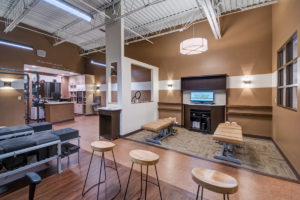
At CSS, there are three components to change the spinal structure. The first component, as we mentioned, is strengthening muscles in a mirror-image posture. The second component is doing a manual spinal adjustment. The third mechanical force involves stretching the ligaments of the spine at least 10 minutes into a proper position. This is our three-pronged approach with all of our patients.
A complaint chiropractors hear a lot is that patients feel have to keep going back to the chiropractor because the adjustment doesn’t hold. With our corrective protocol, we’re employing more than just the adjustment here. We remodel a patient’s spinal structure into its proper bio-mechanical position, for optimal health. Patients don’t need to rely on getting adjusted forever because we are able to change their spinal mechanics. Looking better on the inside helps us look better on the outside, and it also improves the way our bodies function. Who wouldn’t want that?
Why Home Care Is So Important?
Dr. Shapiro: What’s the requirement for ALL patients to maintain the gains made in our Tucker locations?
Dr. Mike: Home care. Patients need to do their home exercises every day. These exercises are different for every person because every person has a different spinal structure. We give patients specialized equipment to take home to ensure they maintain proper spinal alignment after they leave the office.
Dr. Shapiro: Awesome! So the home care acts like the glue that holds together what we do in the office. Additionally, because each person’s spinal mechanics vary, every patient has a custom exercise routine, a customized adjustment, and custom targeted traction for ligaments. This is NOT a cookie-cutter approach, which makes all the difference in our outcomes.
Anything else about posture, health or spinal correction?
Most Symptoms are Related to the Spine
Dr. Mike: Many people don’t realize the symptoms they have can be traced back to the spine and nervous system. When someone’s posture and spine are corrected into its proper alignment, then the body starts to function properly. People’s symptoms start to go away naturally because the cause of their problems is structural. When we improve the spinal structure, we’re not treating symptoms; we’re improving the nervous system. An improved nervous system is a real game changer in people’s overall health and wellness.
Improve Your Life
Dr. Shapiro: When you improve posture, it also helps your body’s neurology and physiology function at a higher level. This allows people to not just feel better, but to actually become healthier.
Please visit Complete Spine Solutions for more information on posture and our proven corrective chiropractic protocols.
About the Author

Dr. David Shapiro, DC, CEO of Complete Spine Solutions
“At the age of 16, I didn’t want to have knee surgery from a wrestling injury. Because I did not have back pain, I was reluctant to turn to chiropractic; but, with no other option except surgery, I made an appointment to see a chiropractor. I’ll never forget that first treatment. It felt as if a huge weight was suddenly lifted from my body. My misaligned spine was putting excessive pressure on the side of my injured knee.
Dr. Galbraith balanced out my body with adjustments to the spine, allowing my injured knee to finally heal – no surgery! That was the moment I decided I was going to be a chiropractor.” After graduating in 1993 from Life University of Chiropractic, Dr. Shapiro settled here in the Atlanta area with his wife, Arlene, to establish his practice. He has been part of the University’s extension faculty since 2007 and opens his practices to senior interns, providing a training ground for future doctors of chiropractic.
